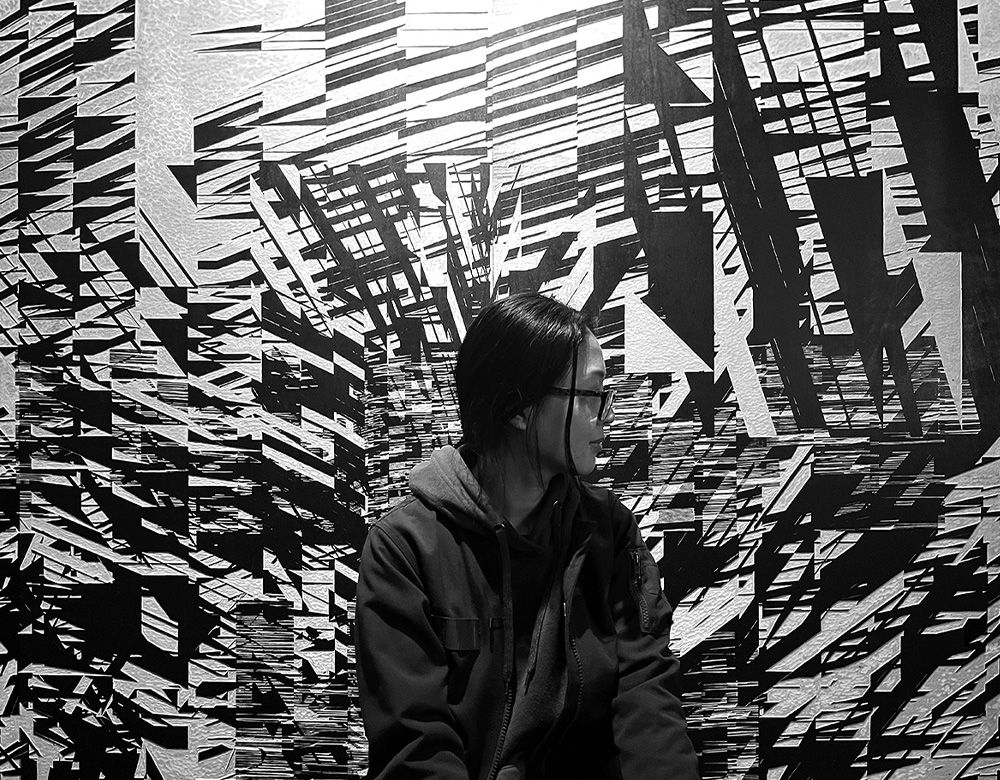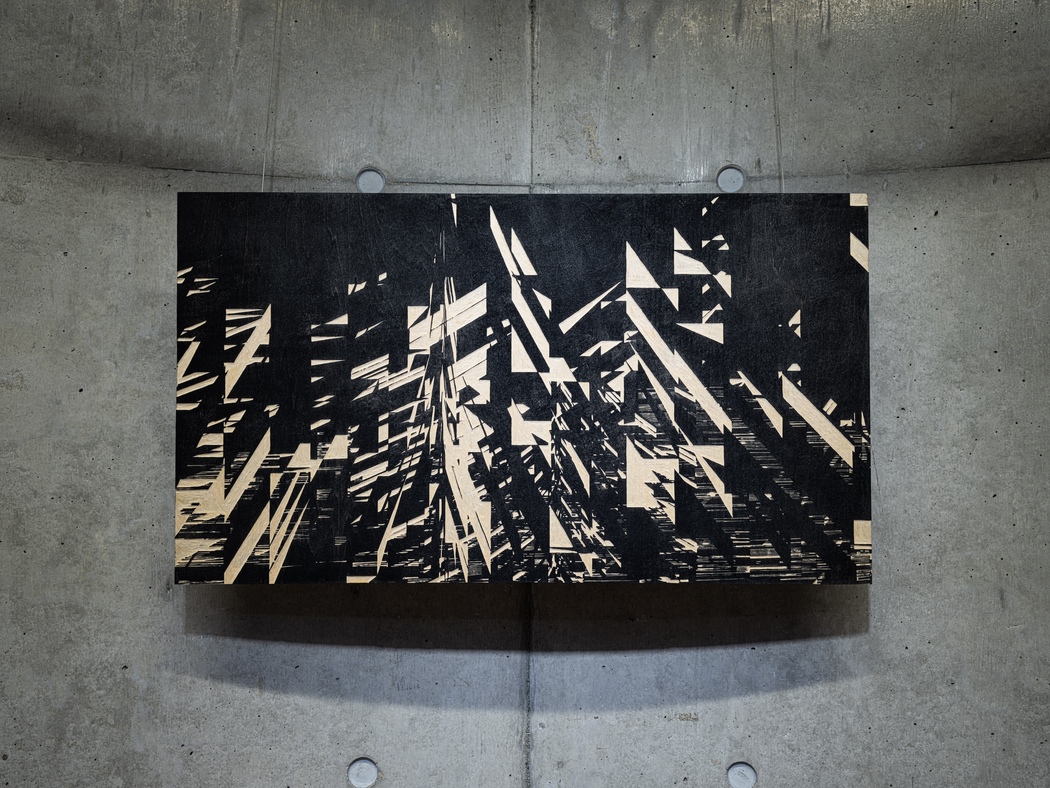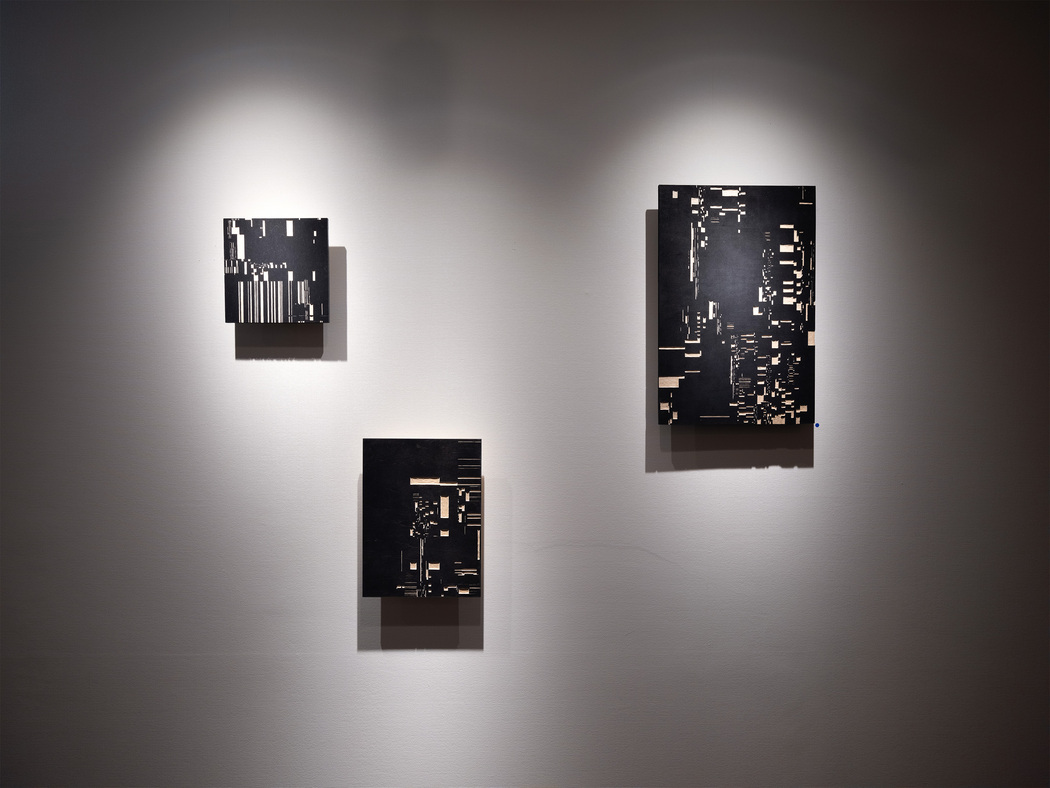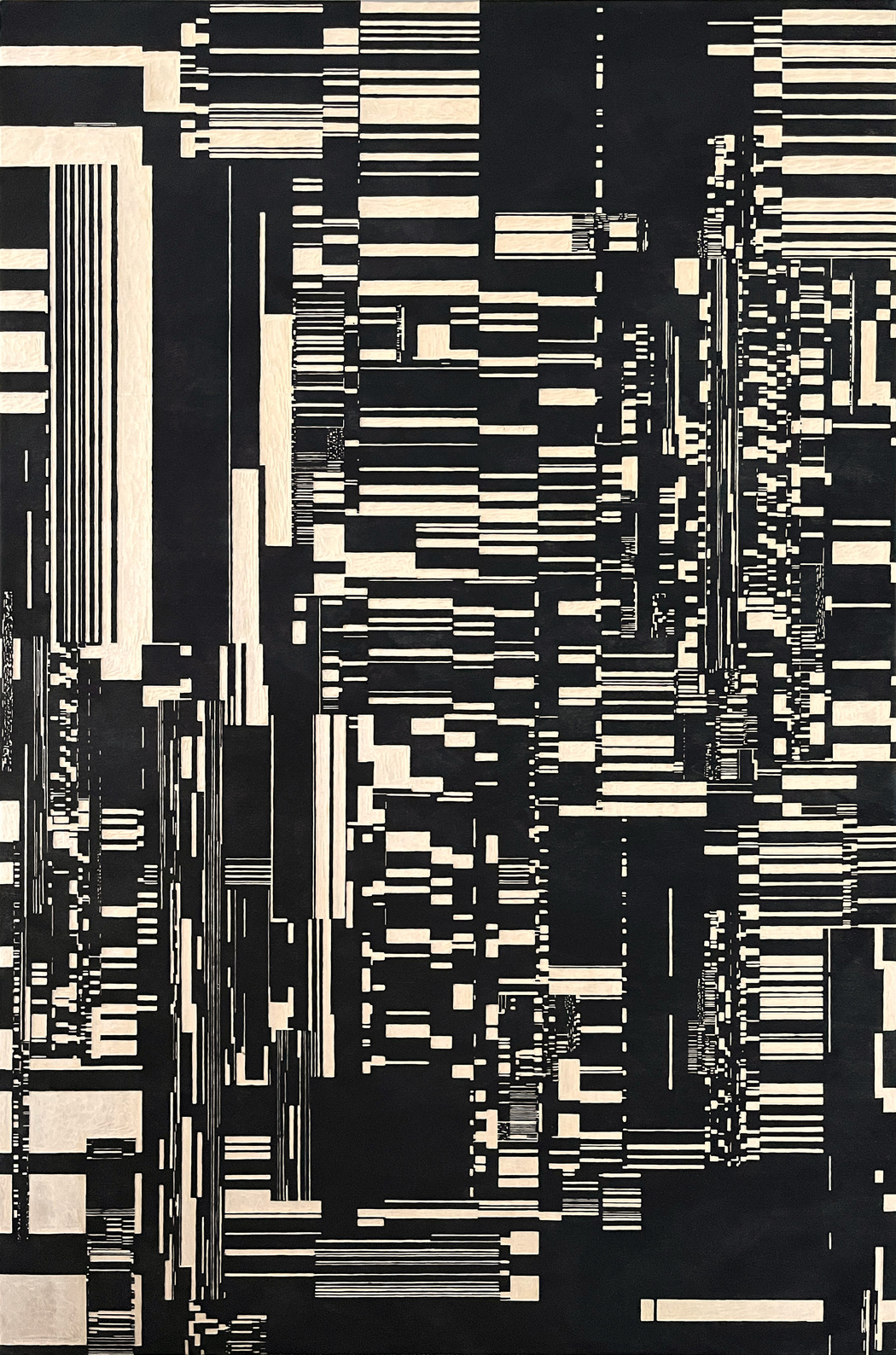Mole^3
Where do you live: Tokyo
Your education: School of Art and Design at University of Tsukuba
Describe your art in three words: everything originates same
Your discipline: woodblock print, generative art
Website | Instagram

How did you first become interested in combining traditional woodblock printmaking with digital and generative art?
After studying oil painting and woodblock printing at university, I started working in design while continuing to make prints. During that time, I began using digital tools such as Illustrator, and gradually began creating digital sketches for my prints. Since I prefer indirect expression over direct expression, I naturally became interested in using digital technology.
Later, when I was stuck in my printmaking, a colleague at work introduced me to “generative art.” I thought that if I learned this, I might be able to create new ways of expressing myself in printmaking, so I started studying coding.
Your work involves a combination of open data, images, sound, and generative art. How do you see these elements coming together to tell a story or convey an emotion?
Although the work I presented this time does not include elements such as open data, images, or sound, I would like to talk about the work I do using these elements.
For me, data is “material for painting.” Even in data that at first glance appears inorganic and objective, there are waves and fluctuations, which can be replaced with organic images such as clouds in a landscape painting, distant mountains, and sunlight filtering through the trees. I value finding beauty and interest in the continuity, singularity, and regularity of things, and visualizing them.
In addition, the animation that decomposes and reconstructs images contains the message that “people can change infinitely.” In my sound works, I try to give emotional fluctuations and depth to the sound through interaction with vision, as well as to express a sense of connection between people. In the process of generative art, I explore the balance between harmony and disharmony while looking at the unpredictable changes created by randomness and algorithms, and reinterpret the world from a new perspective.
By combining these elements, I hope to present a new perspective to the viewer at the intersection of data and emotion, or printmaking (traditional hand-made work).
 Mole^3 | Coincidence or Destiny
Mole^3 | Coincidence or Destiny
What role does woodblock printing play in your process? Could you describe how it integrates with your digital work to create a more expanded form of printmaking?
My career as an artist began with woodblock prints. Woodblock prints are not just a technique, but also a way for me to understand the world. Through the process of carving and printing by hand, I have been able to converse with people from the past, deepening my understanding of materials and structures, and broadening my interpretation of the world I live in. For example, I have felt that one aspect of the world is the way that multiple things are born from one thing, or the way that opposing things are born from a certain source, and sometimes exhibited this coexistence as a pair of print and block. Eventually I began exhibiting the “block” itself as a work of art, but I always print the print.
After that, I started working on video production using coding. Here, I am attempting to abstract the production processes of woodblock prints, such as “separating blocks,” “overlapping colors,” and “rolling paper,” and to “make prints three-dimensional” in digital space. I am also challenging myself to express generative art generated by algorithms as sculpture.
Through the production using algorithms, the question of “What is it that people find beautiful?” was born. We unconsciously judge beauty based on human senses and values, but is this really something universal? By using the program, I was able to distance myself from the deliberate pursuit of beauty and wanted to find “unknown beauty” that is not bound by conventional values. A slight difference in numerical values can create order or cause chaos, and in the process, beauty that we have overlooked may be hidden.
However, a work is not completed by calculation alone. Ultimately, through my hands, experience and physicality overlap, and “something” that goes beyond mere order or chance is born. In this way, the intersection of machine and human, calculation and intuition, objective and subjective gives birth to new expressions, which I believe are also an expanded form of printmaking.
In the course of this exploration, I came to the idea that both humans and the world are part of a kind of algorithm. Having this perspective may have allowed me to see various things from a bird’s-eye view.
What is your vision for the future of printmaking in the digital age? How do you think technology is influencing traditional forms of artistic expression?
I don’t have a clear vision for the future of printmaking in the digital age, but in my work, I would like to explore the relationship between coding and printmaking, not just go beyond technique, but broaden my perspective on the world and connect with a world with different communities and values.
Technology complements traditional techniques and media, expanding the possibilities of art by reinterpreting them in new ways. For artists, technology offers infinite means of expression, and I intend to actively use it, except for the parts that I am particular about. However, I believe it is important that technology does not destroy traditional artistic expression, but rather respects it and uses it as a tool to add new perspectives.
 Mole^3 | Fragments
Mole^3 | Fragments
Could you talk a little about the influence of Japanese culture on your work, particularly in terms of its impact on your choice of materials and technique?
I first encountered woodblock prints when I was in the second year of junior high school and found a book on ukiyo-e in the school library. Since then, I have been strongly attracted to woodblock prints, and I am particularly fascinated by the traditional multi-color woodblock print technique.
While I am always exploring new possibilities for woodblock prints, I also value traditional materials. I use plywood, carving knives, water-based pigments, baren, and washi paper, and try to make the most of the texture and characteristics of each. In particular, the act of “carving” has a sense of carving time and feelings, and I feel it is an act of inheriting and connecting culture.
I also feel that my choice of materials and techniques is influenced by the environment in which I was born and raised. I was born in Kochi Prefecture, Japan, and grew up in an environment surrounded by mountains and the sea. During my childhood, there was a sawmill in front of our house, and I grew up surrounded by the smell of wood. I think watching my father fillet fish and sharpen knives with a whetstone also had an influence. In addition, the neighboring town is a famous producer of washi paper, and it was always close to me. As an aside, I studied washi paper for my graduation thesis and even had the experience of making paper myself. This background naturally formed the basis for me to incorporate Japanese materials and techniques into my work.
How do you see the role of generative art in contemporary visual culture, and what do you hope to achieve with your approach?
Generative art brings new perspectives to contemporary visual culture while simultaneously raising questions about the process of artistic creation itself. Works generated by algorithms and technology can create new visual value when artists add to them. However, debates have also arisen about the extent to which technology should influence art, and whether the main creative actors are humans or machines. In this way, I believe that generative art is an important element that broadens the framework of contemporary art at the intersection of technology and human creativity.
Generative art is sometimes created with the sharing of algorithms and source code, and has developed under common frameworks. This characteristic makes it easier for many artists to utilize the technology, but it also leads to the possibility of artworks having similar styles, or the expression being limited by output environments like monitors. Furthermore, with the acceleration of production speed due to technological advancements, there may be a challenge where artworks are rapidly consumed and tend to have a short lifespan.
In my own approach, I do not use technology simply as a tool, but rather I want to create unique works by actively incorporating randomness and unpredictability that cannot be controlled by human hands, while also reflecting my own experiences and thoughts. Within the framework of generative art, my aim is to maximize the possibilities for personal expression and find the balance between technology and human creativity.
 Mole^3 | Rhythm
Mole^3 | Rhythm
What advice would you give to artists who are interested in exploring the intersection of traditional and digital art forms?
Learning digital technology was a very time-consuming and persevering process for me, so I don’t necessarily recommend it. However, I think it’s very meaningful to collaborate with artists who have different techniques. Doing so can broaden your perspective and give you new discoveries and creative stimulation.
I also think it’s most important to approach both traditional and digital art with respect and sincerity. I think that by deeply understanding and respecting the techniques, history, and background of each, new expressions will be born that go beyond mere fusion.
 Mole^3 | Algorhythmic Carving
Mole^3 | Algorhythmic Carving

Leave a Reply